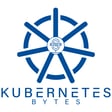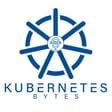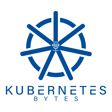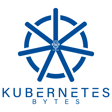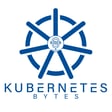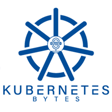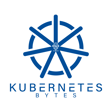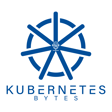Introduction and Hosts' Greeting
00:00:03
Speaker
You are listening to Kubernetes Bites, a podcast bringing you the latest from the world of cloud native data management. My name is Ryan Walner and I'm joined by Bob and Shaw coming to you from Boston, Massachusetts. We'll be sharing our thoughts on recent cloud native news and talking to industry experts about their experiences and challenges managing the wealth of data in today's cloud native ecosystem.
00:00:26
Speaker
Good morning, good afternoon, and good evening wherever you are. We're coming to you from Boston, Massachusetts. Today is February 2nd, 2022. Hope everyone is doing well and staying safe.
Surviving the Boston Snowstorm
00:00:40
Speaker
Let's dive into it. Bhavan, how are you doing?
00:00:43
Speaker
I'm doing good. Like I survived a snow blizzard. So I think that was my first big or major Northeastern like since I've been living in Boston. That's right. Yeah, there was a very there was a similar one about this time of year in 2015. And this is a couple of years after I moved to to Massachusetts. And I have a video that popped up in my like, you know, memories. Oh, wow.
00:01:08
Speaker
And it was like, watch this video. And it was my wife jumping off the back porch, which the snow is up to the top of the back porch. Just it was probably like six feet high in snowdrifts. And she disappeared straight up into it. And I was like, wow, this is quite literally to the day of just 2015. So that was probably the comparable one. I think we got more that time. But this one's we got like out near us, we got about 26, 27 inches.
00:01:36
Speaker
Oh you got more i think i was at like 18 through 22 somewhere around that range so not too bad then yeah a little bit southeast of us they got the they got the mark it was 31 so i feel like once you're at 26 31 who cares so yeah it's just a ton of snow either way
Guest Introduction: Xin Yang from VMware
00:01:55
Speaker
Okay, so we have a really exciting show today. We are going to have a guest Xin Yang on the show. She's currently a tech lead at VMware and she's working on all things cloud native integration with data protection. She is the co-chair of the CNCS storage tag.
00:02:13
Speaker
a co-chair of Kubernetes Storage SIG, and a co-chair of the Data Protection Workgroup in Kubernetes, and a maintainer of the Kubernetes CSI. That's a mouthful, but she does a lot of great work. So before joining VMware, Xing was a lead architect at OpenSDS, and she also worked at Dell EMC for many years.
00:02:32
Speaker
We have a lot of good questions for her when it comes to the CSI projects, the storage SIGs, as well as the data protection work group. So excited for that today.
00:02:44
Speaker
I know me too. Just looking at everything that she's doing right now, we can ask her all sorts of questions. Hope she's ready.
Amazon EKS Clusters: New GuardDuty Feature
00:02:57
Speaker
Let's turn to some news, Bob, and kick us off. I don't think I put much news in here, so why don't you just run through what you have.
00:03:03
Speaker
Yeah, it's been a busy couple of weeks, not from an announcement perspective. I just have one feature announcement around Amazon EKS, but then we had some news around some acquisitions and funding rounds that I wanted to talk about with the community today. The feature was Amazon GuardDuty adds support for EKS clusters. That means that now you can use GuardDuty to monitor any suspicious or malicious behavior and
00:03:31
Speaker
get alerts for any potential threats to your containerized workloads using GuardDuty. Again, if you're using GuardDuty, it's free for the first 30 days, but there's no additional configuration needed. It will talk to your EKS control plane, and if it finds the security vulnerabilities, it will give you a report which has details around the container, so pod ID, container image ID, any associated tags, and generate a report for you, which you can then go and look at and take corrective actions. I think there are
00:04:01
Speaker
27 different vulnerabilities or things that they scan for. And obviously that list will keep on increasing, but that was like a cool feature. Again, something that I do want to try out on my cluster as I'm working through my solution.
VWorks Acquires Magilix
00:04:15
Speaker
So yeah, I feel like the number of security based news articles we've been since starting this show is probably the majority. Yep. So I'm really excited to see.
00:04:25
Speaker
And talking about security, VWorks acquired Magilix and their policy engine to work with their GitOps pipeline. So one of the things is obviously Magilix wasn't the only vendor who was working on policy as code using the open policy agent, but then they were definitely one of the big ones. And VWorks acquired them not just for their SaaS offering, but they're also releasing an enterprise on-prem version that will be available to VWorks customers.
00:04:55
Speaker
The thing that stood out to me was having Magilix, sorry, I'm having a hard time saying that word for some reason, but using... Magilix is not the most easy word to say. Yes, agreed. But you can use your policy engine and point it to your GitOps pipeline. It scans and during your code commits, during your application deployment, even in runtime in your production environments,
00:05:21
Speaker
It will continuously check for the policies that you have predefined and then generate alerts so you can go and fix things. So one of the features that they highlighted was if you have a non-compliant deployment, they'll stop it from going into production. So that was a cool feature, helps people who are adopting the GitOps framework and make things easier from a security perspective.
00:05:45
Speaker
Awesome. Yeah. And then the next acquisition was around monitoring. So Diamanti bought Groundworks and all of the monitoring that comes along with it. So Groundworks, for people who don't know, which I was one of those, I had to look up what they did. But they have a solution that is more of an IT monitoring software product for physical, virtual, and cloud-based or cloud-native infrastructure. So this definitely gives Diamanti
00:06:12
Speaker
the insights into containerized applications and kubernetes clusters or docker containers along with the underlying infrastructure metrics and gives you a nice ui or a monitoring dashboard that you can use for their solution so that was another acquisition and the last one that i want to talk about today was a funding round.
Minio's Unicorn Status after Series B Funding
00:06:33
Speaker
So Minio, again, one of the object storage vendors who have an S3 compatible object store that can be deployed anywhere. So on any cloud, on any Kubernetes cluster, they just raised their series B funding. I think the funding round was around $103 million, giving them a valuation of over a billion. So they officially become a unicorn now.
00:06:55
Speaker
I was surprised personally that this was only series B. Minayo has been making a lot of noise, so I expected them to be a bigger company or have gone through multiple funding rounds, but this was another interesting thing. Yeah, I feel like they've been around for a long time. Yeah.
00:07:11
Speaker
Maybe I'm, maybe that's just the feeling we get. Good for them. That's exciting. I know. But that's it. That's it for the news. Great. Well then I don't have any news. Um, and I, I think that's where we're going to end and jump into our topic.
Xin Yang's Role at VMware
00:07:28
Speaker
So today's topic is really just about everything storage, Kubernetes contributing, uh, storage interest groups and work groups, and just really to find out more,
00:07:38
Speaker
And Xing Yang is going to join us shortly. So without further ado, let's have her join us so we can dive into today's topic. All right. So without further ado, let's bring Xing Yang on the show here. Xing, it's really great to have you on Kubernetes Bites here. Please tell everyone a little bit about yourself and what your background is. Hey, thanks, Ryan and Babu for having me here.
00:08:07
Speaker
Hello, everyone. I am Xin Yang. I am a tech lead in the Cloud Native Storage team at VMware. I'm working on providing storage to applications running Kubernetes cluster on vSphere. And Cloud Native Storage data protection is another area that I'm focusing on there. I have been with VMware for more than two years. I'm also leading a virtual team at VMware to
00:08:37
Speaker
work on Kubernetes upstream contributions. The goal is to make Kubernetes a better platform.
00:08:45
Speaker
And before joining Linwell, I worked at Dell EMC for many years. Well, I had the opportunity to work with you, Ryan. So I worked in the areas of storage, visualization, data production, and disaster recovery. And that was also when I started my open source journey by contributing to OpenStack. I started to get involved in Kubernetes.
00:09:14
Speaker
six storage at the end of 2017, starting with contributing in the volume snapshot project. At that time, it was still in experimental pre-alpha stage. Initially, it didn't even have CSS support included because at that time, CSI was also at a very early stage. It was later on that we added CSS support for Women's Snapshot. Actually now, Women's Snapshot
00:09:42
Speaker
is only supported for CSI drivers. And then I worked with other community members to bring volume snapshot to alpha in Kubernetes 1.12 release and beta in 1.17. And eventually it moved to GA in 1.20 in 2020. So that's a big milestone. And reflecting back, I think a lot had happened to me for me in 2020.
00:10:11
Speaker
In the beginning of 2020, we formally established the Kubernetes data protection working group with the support from SIG Storage and SIG athletes. And we also have support from multiple storage and backup vendors and cloud providers as well. And it was also in 2020 when I had the honor of becoming a co-chair of Kubernetes SIG Storage, joining Sadali from Google, who is the other co-chair.
00:10:42
Speaker
And that coincided with the start of the pandemic. So the disappointing part is that Six Story has not had an in-person meetup since QCon in San Diego at the end of 2019. I hope that will change soon.
SIG Storage and Data Protection Overview
00:11:18
Speaker
summarized what I've been doing in Bloomberg and in the CNCR and Kubernetes. Wow, that's a long list. I only knew you as the co-lead for Kubernetes SIG Storage and I've listened to your talks as part of every Kubernetes release. And I was there in person when you did the Cloud Native Data Management Day panel at KubeCon LA.
00:11:42
Speaker
But yeah, this is impressive. So I like I wanted to like double double click on the communities storage SIG and then the data protection working group. How those two work together going forward and what are their goals? Like do they share some goals or like each unit works as its own thing?
00:12:02
Speaker
Yeah, sure. So the Kubernetes 6.0 Ridge, that is focusing on how to provide storage to containers running in a Kubernetes cluster. So that includes persistent volumes that live beyond a pod's lifecycle and ephemeral volumes that are tied with a pod's lifecycle. And 6.0 Ridge is responsible for the
00:12:29
Speaker
Lifecycle volumes used by the parts, so that includes provisioning the new volume, attaching volume to your node, and mounting so that the part can use it, unmounting, detaching, and deleting it when it's no longer needed. And seek storage, also look at how to influence the scheduling decisions based on topology. So you look at the accessibility, making sure that volume is scheduled
00:12:59
Speaker
to a node which has access to storage. It looks at the capacity, whether there is sufficient capacity when the pod is scheduled to a node. And also, CX Storage supports one snapshotting and one extension and so on. Also, CX Storage has one plug-ins that allows the various storage systems to provide storage to a pod. So there are CSI
00:13:28
Speaker
drivers and there are entry warning plugins that have been migrated to CSI drivers and there are flex volume that is deprecated and right now any block and file storage are supported in Kubernetes but we are also working on adding object storage support so we have been trying to bring the object storage project cozy to alpha for a few releases now hopefully we can make it in the
00:13:58
Speaker
1.24 release. So I probably want to talk a little bit about the difference between a SIG and the working group. Sure. Yeah, SIG, it can be either a horizontal SIG or a vertical one. Like SIG storage is a vertical one. Also like SIG networking, that's a vertical one that is focusing on specific domain. Horizontal SIGs are like SIG architecture, SIG release.
00:14:28
Speaker
So secretly, well, own code for a working group normally that is sponsored by multiple six. Normally it's established to solve a particular problem. So in our case, we find there are some gaps in data protection support in Kubernetes. So that's why we decided to form this
00:14:55
Speaker
working group and we get support from SIG storage leads and SIG apps leads at that time. So basically, so this allows us to have a place to collaborate and to discuss what other missing functionalities in supporting data production in Kubernetes and work together to find the solutions.
00:15:18
Speaker
So that's the, so they are definitely related since the SIG storage is one of the SIG that sponsored the data protection wind group. So if you look at the items data warning group has been discussing like consistency group support. So that's also something that is owned by SIG storage as well. It's just data protection wind group has a special interest
00:15:47
Speaker
that they can use that as part of the backup and restore. I've never heard it actually explained that way. That makes a lot of sense. It's actually good to hear that analogy of the vertical and horizontal.
00:16:04
Speaker
it plays really well and helps me understand, I think, and maybe some others that are going to listen to this, what the detection working group does. Now you mentioned consistency groups, and I know from your past experience, you did a lot of work in OpenStack with the consistency groups.
Kubernetes vs. OpenStack: A Feature Release Comparison
00:16:18
Speaker
So I'm curious, how has the experience been in the Kubernetes community when you're comparing something to something like the OpenStack? So definitely there are a lot of things that I can learn from that experience since I
00:16:34
Speaker
added those APIs and implementation in OpenStack. But I think in Kubernetes, it's also one part, I think it's very different. I think it's really the process part. In Kubernetes, you have alpha, beta, and GA releases. So you first introduce a feature into alpha. In OpenStack at that time,
00:17:01
Speaker
There isn't such a thing, right? So basically, you bring the feature in, then that's the GA feature. I know later on, there are some of the teams added experimental feature. So I'm not sure if they have that incident or not, but at least at that time, as soon as you introduce the API, it's already GA.
00:17:23
Speaker
I actually, I think, you know, there are, you know, you can always look at things from both sides, right? Right. On my hand, okay, now it takes much longer. But on the other hand, it's good because now your feature gets thoroughly reviewed and tested. And we even have this production readiness review thing.
00:17:45
Speaker
For everyone to introduce a feature, you have to fill out this big form. You need to think about how to troubleshoot. What are the metrics that you can look into? Is there any performance problem? You look at all of the things to make your feature more production ready. That's the one big difference.
00:18:06
Speaker
So right now that particular cap that I have been working on that for some time, it's still in the design phase. So it's going to slow because there are many different situations that we need to consider. Especially that API needs to support those log and file. It's actually quite challenging because they have different
00:18:29
Speaker
characteristics. So that's why it takes long. So we want to make sure that the API is down right. Yeah, absolutely. And I get there's pros and cons to coming out GA right away and be able to use something that may or may not work fully versus something that's well tested. Now, talking about testing, you know, as a SIG, you own code and you might own code for something like consistency groups. Do you also own the testing as well?
00:18:56
Speaker
Yeah, so when you add a feature, you are also responsible for adding unit tests, integration tests, and E2E tests. So those are part of the... So there is a SIG for testing. There is a SIG testing. That's the horizontal SIG. But for each vertical SIG, definitely whenever you add any feature, if you add any code, you will need to have tests for that.
00:19:23
Speaker
Since these go through the alpha and beta phases, you can enable those experimental features and people using Kubernetes in the real world can be your QA team as well or testing team and just make sure everything works and file bugs. I like this approach better than the OpenStack one.
00:19:43
Speaker
I'm sure some people like the OpenStack one too, you never know. I don't know. So, you know, a lot of our listeners here vary in terms of their knowledge base when it comes to Kubernetes, how SIGs work, or even just how, you know, some of the technology works.
Volume Snapshots in Kubernetes
00:20:00
Speaker
So, you know, we definitely want to
00:20:03
Speaker
ask you sort of the most basic question maybe, which is, you know, how do people actually work with volumes and snapshots? Or how do they work with restores and clones of those snapshots? And what does your you know, how is your involvement been? And how is how are those things evolved over your experiences?
00:20:28
Speaker
Right. So, volume snapshot, it's GA now. I see a lot of backup vendors. They are using volume snapshot to do backup restore. So, to use that, basically in Kubernetes, you have the volume snapshot aka object. So, you can just create a volume snapshot
00:20:54
Speaker
API object in Kubernetes that will trigger the wooden snapshot on the storage system. So I think a backup vendor can use that to take a snapshot.
00:21:05
Speaker
And then of course they need to have some other logic. They have data mover to move the snapshot data to some place, some location. And then at the restore time, I think I can see different paths at restore time. If your snapshot is actually a snapshot that's already uploaded to a object store, like EBS snapshot that's already uploaded, in that case,
00:21:35
Speaker
you can actually just do a create a world in front snapshot. But if it's a other storage system that hosts a snapshot is not uploaded to some other places like a local snapshot, right? It's like a backup. In that case, you probably will need to use a different way. Like in our case, since I'm working on the blog plugin for vSphere, what we do is we will create a
00:22:04
Speaker
PVC. And then we will copy data, we download data. And then we copy the data, and then basically overwrite the new volume with that data. Yeah, so I think there are probably other ways. And then the other way is
00:22:22
Speaker
I don't know if you guys have used the volume populator feature, so that's also- I did want to ask you about it. Yeah, that's another feature we are very interested in in the data protection volume group. But that's still a six storage feature, right? So that feature we're trying to target in data in 1.24. So right now it's our feature. So with that feature, what you can do is
00:22:50
Speaker
basically allow you to create a PVC from any data source. So not just a one snapshot or another PVC.
00:22:58
Speaker
It can be from your backup. So if you write a warning populator, then you can just create a PVC this way. So you can do that at the restore time as well. And the benefit of that is that it can allow you to support topology, the wait for first consumer mode. Right. So a question about the populator, how is that different than what
00:23:26
Speaker
I forget what it's called today, but there are there are ways that you can tell some other source to be ingested into a PVC today, right? So if it's like a GitHub repo or some kind of code base or downward API or one of those two where you can kind of have things popular. I guess what's the difference there with what you're working on with data popular? Is it focused just mostly on like the data protection?
00:23:52
Speaker
Uh, so I think for that one, those are like admiral volumes using those. Right. So this is, uh, uh, like for persistent volume, you can actually dynamically provision it. So that's why it can actually support topology, right? So it can actually, um, with the wait for first, uh, consumer, you can have your topology, um,
00:24:16
Speaker
defined and then it can actually provision that to the zone or some region that you specified. So that's the benefit of using this.
00:24:29
Speaker
Got it. Okay. That makes sense. And I know, uh, I know I've read or saw somewhere, it could have been on one of the previous, um, uh, presentations you've done is the option or, or I know one of the working groups, maybe the data protection one is working on quiescing, unquiescing for snapshots. I know that was a feature thing. Uh, what's, what's that again? Um, the quiescing or unquiescing. Yeah. I was just curious of what that, that looks like today. I know it's being worked on.
00:24:59
Speaker
Yeah, so that's also something we are really interested in working on in the Data Protection Wing Group. That is to quiet your application.
00:25:10
Speaker
So when you are backing up an application, you want to quiet that before taking a backup. So that one, we do have a cap. Right now, that actually is owned by SIG node. That's another SIG. So there are still a few unresolved concerns from SIG node side that we need to get resolved.
00:25:35
Speaker
Yeah, so that one is kind of a steal. We kind of put that down hold in this release. We need to get back to that one. Makes sense. And you said, Kep, I don't know if you explained it before, but that's a Kubernetes enhancement proposal, right? Correct. Okay. Just in case folks were listening, were wondering. And like going back to the previous comment, right? For the volume snapshot API to work, does it need support from the storage layer or now with its general availability, we can use it with any storage backend?
00:26:05
Speaker
Basically, your CSR driver needs to support that. Otherwise, you cannot have it.
Kubernetes 1.23 GA Features
00:26:17
Speaker
All right, so I guess, you know, what's, what's there to highlight when it comes to new releases? I think we're on, are we on 123 123 was out? Yeah. Yeah. Okay. What have you been working on? What's the highlight in the in these releases that maybe we didn't mention yet or something that comes to mind?
00:26:39
Speaker
Yeah. Okay. So, yeah. One.23, that was already out. I just, yeah, I can highlight a few things that we did in One.23. So, first thing is the deprecation. I think I actually mentioned that already. Flex volume is deprecated. Oh, yeah. So, yeah. CSS driver is the way to go. We just need to keep hammering that message and like, I don't know who's, do you find that people are still trying to use Flex driver a lot?
00:27:08
Speaker
Apparently, yeah, I don't know anyone myself, but I heard there are still a lot of users. That's why we can't really just remove it yet. Yeah. So, but I hope, hopefully they move to CC driver. Yeah. And then we also have a few GA features in 1.23. So the first one I want to mention is the
00:27:37
Speaker
the generic ephemeral volume feature. So that basically allows any 3D driver that supports a dynamic provisioning to be used as an ephemeral volume and have the volumes lifecycle bound to a pod. And also all the 3D class parameters for one provisioning are supported. Any features supported with PVC are supported with this generic ephemeral volume.
00:28:06
Speaker
So that's the first one. Is the use case around that mostly to have an ephemeral volume with an amount of space that might not be available on the local node? Or what's the use case, I guess, that drove that feature? Yeah, so Afro volume, that's really for some scratch space. So the benefit of this feature, the generic Afro volume, is that you can actually just use any
00:28:33
Speaker
PVC, you can actually put PVC to do that. So that's like some extra space, not on your root disk. Got it. Okay. Yeah. And does it work with stateful sets? It should. Okay. Go test it, Marvin. All teachers supported with PVC should be supported. So if you find that does not work, then file bug. File bug. Nice. Yeah. And then the next one,
00:29:02
Speaker
Next GA feature is basically there is a feature that allow you to configure the volume commission and ownership change policy for the ports. So this basically is a way to speed up the port start-up time so the user can actually skip the recursive mission changes at the mount time. So that's the second one.
00:29:29
Speaker
And then another one is to allow the CSR drivers to declare support for FS group-based permissions. So that's awesome over the two GA. So those are the three features GA in 1.23. Nice. What about, sorry, go ahead.
00:29:49
Speaker
Oh yeah, go ahead. I was going to talk about 1.24 if you are interested. Oh yeah, that was my next question. You highlighted three things from 1.23. What about 1.24? What should we be on the lookout for?
Anticipated Features in Kubernetes 1.24
00:30:01
Speaker
Yeah, so I'm actually just pulling out of our six spreadsheet. We have this planning spreadsheet. Yeah, so the first one I want to mention is the warning expansion feature. So this has been there for really, really long time, has been in beta for a very long time. So now we are finally trying to move this to GA.
00:30:22
Speaker
And the reason that it stayed in beta for such a long time is because we are trying to fix some bugs. So in 1.23, there is actually a alpha feature called recover from resize failure. So without that, what happens is that if you try to resize and then if the new size that you specify is too big, basically your three system
00:30:49
Speaker
Cannot cannot do it. It does not have that much capacity in that case. There's really no good way of recovering from that failure you actually have to give a even bigger size and then make sure that your screen system can and can support that so This feature basically allow you to specify a smaller size so allow you to recover so with with that
00:31:13
Speaker
With this feature to recover and resize failure, now we are trying to move world expansion to GA. So we'll see if we can make it in 1.24. Great. I feel like I've been using that feature for so long, I didn't know it wasn't even GA. I know. So if you didn't run into those issues, then you're good. I haven't expanded my volumes to too large of a number, I guess.
00:31:40
Speaker
Right. And let's see. And the next one, I think we just mentioned the volume populator feature. That's going to beta in 1.24. And the other one, I think I also mentioned earlier, Cozy, we are still trying to bring that to alpha in 1.24. And hopefully we'll make it this time.
00:32:07
Speaker
And other than that, there are, you know, CSM migration has been going on for quite some time now. So there are various cloud providers that were doing the CSM migration, trying to move the entry plugins to arbitrary CSR drivers. So a few of them will go GA on the 24th.
00:32:31
Speaker
Some of them are still in beta, so they're in different stages, but definitely we are moving forward with that feature.
00:32:39
Speaker
So I do want to ask about cozy a little bit just because, um, personally, I haven't actually looked at it a whole lot. So is it mostly, so it's an object API, but does it build on top of the block interfaces or how does that actually, how does it work? I guess is what I'm asking. Yeah. Uh, so the API that we are planning to put currently are to provision a bucket. So it's not a build on top of a block. It's just truly. Yeah. Object bucket provisioning right now.
00:33:09
Speaker
So provision and a bucket, delete the bucket and also allow a user to use that bucket, allow access easily.
00:33:20
Speaker
Okay, so similarly to the way CSI would work to provide the APIs to talk to a backend, to provision, you know, file block, this essentially is CSI for object where you'd have to have some object system that would be able to provision a bucket. Am I saying it correctly? Yes. Okay. Yes, that way it is definitely similar. Okay. Are there any specific vendors that are working, are participating in this cozy project?
00:33:51
Speaker
Yes, so we have vendors from Minio, and also from Red Hat, Google, and also VMware also will be more involved in this. And I think there are other vendors, but I couldn't remember the name. These are great names. It's OK. Thank you. We do have weekly design meetings. Sure. Yeah.
00:34:19
Speaker
Which I guess is a good lead into if someone was interested in getting involved with cozy CSI 6 storage, you know, you know, where do they
Engaging with Kubernetes SIGs
00:34:29
Speaker
get involved? Are there any hurdles? What do they need to know?
00:34:33
Speaker
Yeah, so first thing they can do is to attend six storage meetings. So that's the place where we do planning and feature tracking for every release so they can find out what everyone is working on and see if there's anything they're interested in and they can help with.
00:34:53
Speaker
And in terms of any hurdles, so definitely if you want to contribute, this is open source. So sometimes it could take some time for things to settle down, especially if you want to, let's say, introducing a new feature, it takes some time for
00:35:17
Speaker
the community to reach consensus. So you definitely need to be very patient and work with the community around that. That makes sense. Are there any plans on, I know it's open source, everybody's welcome, but I tried joining one of those six storage meetings and I was like, man, I don't know enough. I don't know any of these people. Is there some way to like,
00:35:43
Speaker
get people like me in six stores and get like, how can I get more involved, like in addition to attending those meetings? Yes, that's a good question. So normally we just ask newcomers to attend meetings and see if there's anything you are interested in and then you can pin the owner of the feature. So I can give you an example, like how I got started, right? I think I already mentioned that is one snapshot. So when I first joined, I also didn't
00:36:12
Speaker
didn't know what's going on. I basically attended a few of the meetings and I see that one snapshot project they are looking for people to contribute. So then I contacted the one of the person who is leading that project and then started to working on tasks.
00:36:32
Speaker
So I think that's still the best way. So sometimes in Kubernetes, there's the SIG contributed experience. They sometimes have some other programs that you can also participate. So to help you get your first cloud, maybe that also will be helpful.
00:36:56
Speaker
Yeah, that's good advice. I think a lot of people would be wondering that, right? I've been to those meetings and it can be overwhelming, especially because a lot of the topics are.
00:37:05
Speaker
in something that may have been talking about for multiple weeks and multiple meetings. So that's really good advice to kind of find somewhere you're interested in, find someone who's sort of the owner and anything them and ask how you can help, right? Ultimately, I think you guys are always looking for help. So an open source. Yeah.
00:37:26
Speaker
Well, I think it's a good place to probably wrap it up and I will leave it with one question is, how can people find out more about
Connecting with Xin Yang
00:37:34
Speaker
what you're doing? How can they help you? Is there any way, anywhere they should follow you if you have any of those Twitter or any accounts or anything to put out there?
00:37:48
Speaker
Yeah, so well, the one good place to find me is to need to go to one of us. There you go. Data protection when group meeting and also we meet also by by weekly and also you can pay me on slack. You know, yeah, among Twitter as well. So so yeah, so you can think you maybe you can also send me emails as well. That that's also way too.
00:38:16
Speaker
But if you look at the six storage meeting, we have this big spreadsheet. If you go through that, you will find my name, you will see what I'm working on. And maybe you can also pay me and see if there's anything you're interested in there. Great. I think that's wonderful. A good way for people to get started, get in contact with you. And I've learned a lot today. I don't know about you, Bhavin, but Shing, it's been a pleasure having you on.
00:38:43
Speaker
the podcast. I know a lot of people are often wondering about what's going on, what's happening in sick storage or in the working groups and how it works. So it's been insightful and I appreciate you being on the show.
00:38:55
Speaker
Thank you very much for having me. Yeah, this was one of those episodes where I think I've kept quiet for a long time. I was just getting all the information out and listening to it. But personally, I would love to have you on the podcast again. Whenever a new Kubernetes release comes out, if you want to talk about the GA beta and alpha features that made it to the release, we would love to have you on and dive into those and just talk to the community about it. Sure. Sounds good. I'd love to.
00:39:26
Speaker
Great. Well, take care, Sheng. Thank you. Goodbye. All right.
Reflections and Learnings on Kubernetes SIGs
00:39:32
Speaker
Well, I don't know about you, Bobbin, but I just learned a lot from Sheng and I think hopefully our listeners did too. This is where we usually cover the takeaways that we got out of the conversation. Why don't you kick it off and tell us what you thought about it.
00:39:47
Speaker
Yeah. And like, there was so much good stuff in that episode. That's definitely a real lesson for me, at least a couple of times. But the thing that, like, again, I knew what SIGs and working groups were and like, okay, they, like, that's how people organize themselves. But
00:40:03
Speaker
just getting to understand like, okay, there are those horizontal work as SIGs and vertical SIGs. And then for things that don't fall in a specific SIG, you have a working group for it. So it made sense like, okay, how the data protection working group relies on the storage SIG and the node SIG. So I don't know, it might feel simple, but that's a good thing to know and understand.
00:40:27
Speaker
Absolutely. I think it was an eye opener for me just to understand the structure a bit better, right? To know that there's, you know, architecture SIG and testing SIG, but they span across, you know, others and the working groups and how they're differentiated is really, really insightful. Yep.
00:40:43
Speaker
And the second thing that I wanted to just have it in our show notes and highlight was just the spreadsheet that the storage SIG uses. If you open the link up, you will find a tab for each Kubernetes release and all the different features that are slaughtered for that release, what's been worked on. You can find out whether they are in GA, beta, alpha phase, design phase, who's leading it.
00:41:09
Speaker
links to the GitHub issues for each of those enhancements. So that's a wealth of information that takes some time to go through and understand, but that's something that will definitely be helpful for any of our listeners.
00:41:22
Speaker
Yeah, absolutely. Getting those details sometimes is hard to find. So that spreadsheet certainly has a ton of information. I think one of the things that caught my eye is someone like Xing who's really working at a level within the storage SIGs that she is now, the story around how she got started with snapshots and how it was,
00:41:51
Speaker
She may have not really known everything that was going on, but she joined a meeting, found a person or persons that were working on something that she was interested in, reached out to them directly, got a way to help and contribute. And I think
00:42:09
Speaker
you know, when you're starting to jump into a new organization such as Kubernetes and the many different SIGs that are out there, it can be overwhelming, right? Picking the right one, speaking up, those kind of things and hearing that story and just understanding sort of, you know, you have to start somewhere and, you know, figuring out where you can help and where you have interest is definitely a great place to start. So I really appreciated, you know, Shing's perspective there.
00:42:36
Speaker
Okay. Well, with that, this brings us to the end of today's episode. I'm Ryan. I'm Bobbin. And thanks for joining another episode of Kubernetes Bites. Thank you for listening to the Kubernetes Bites podcast.

